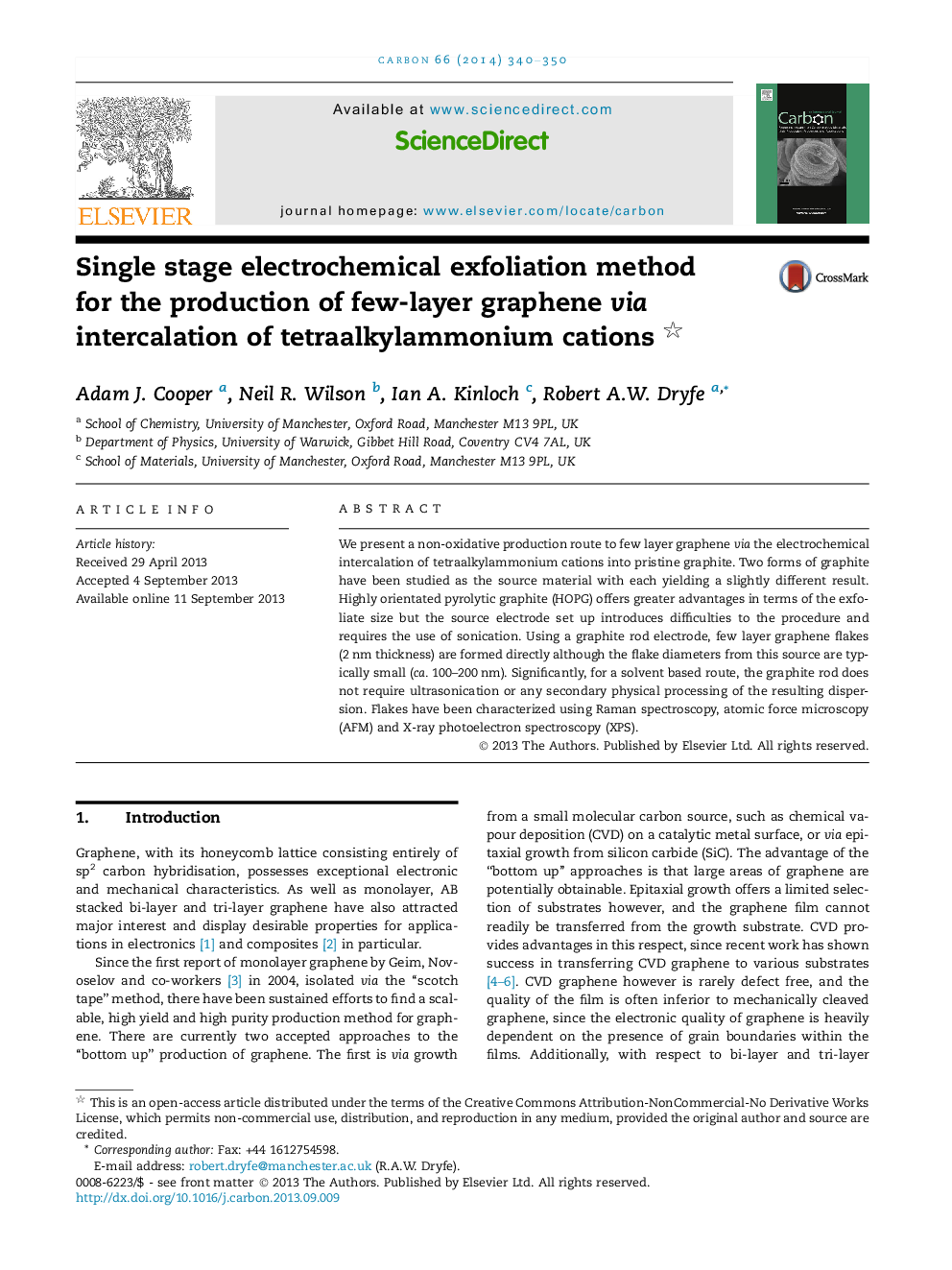| Article ID | Journal | Published Year | Pages | File Type |
|---|---|---|---|---|
| 7855463 | Carbon | 2014 | 11 Pages |
Abstract
We present a non-oxidative production route to few layer graphene via the electrochemical intercalation of tetraalkylammonium cations into pristine graphite. Two forms of graphite have been studied as the source material with each yielding a slightly different result. Highly orientated pyrolytic graphite (HOPG) offers greater advantages in terms of the exfoliate size but the source electrode set up introduces difficulties to the procedure and requires the use of sonication. Using a graphite rod electrode, few layer graphene flakes (2Â nm thickness) are formed directly although the flake diameters from this source are typically small (ca. 100-200Â nm). Significantly, for a solvent based route, the graphite rod does not require ultrasonication or any secondary physical processing of the resulting dispersion. Flakes have been characterized using Raman spectroscopy, atomic force microscopy (AFM) and X-ray photoelectron spectroscopy (XPS).
Related Topics
Physical Sciences and Engineering
Energy
Energy (General)
Authors
Adam J. Cooper, Neil R. Wilson, Ian A. Kinloch, Robert A.W. Dryfe,
